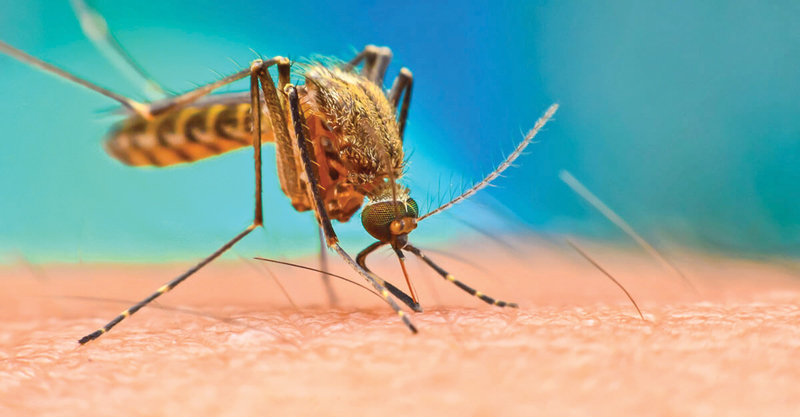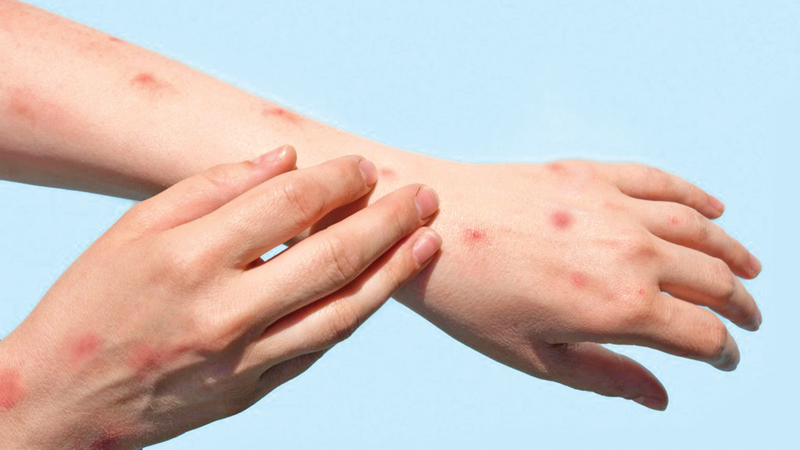With Sri Lanka experiencing a rise in the numbers of chikungunya cases, it’s timely to take a closer look at this mosquito-borne illness. Understanding the key facts, common symptoms, treatment options, and simple ways to prevent infection is essential to staying safe. As the country faces changing weather patterns and increased mosquito activity, knowing how to protect yourself and your family becomes even more important. The following WHO report breaks down the key things you need to know.
Chikungunya is a mosquito-borne viral disease caused by the chikungunya virus (CHIKV), an RNA virus in the alphavirus genus of the family Togaviridae. The name chikungunya derives from a word in the Kimakonde language of southern Tanzania, meaning “that which bends up” and describes the contorted posture of infected people with severe joint pain.
CHIKV was first identified in the United Republic of Tanzania in 1952 and subsequently in other countries in Africa and Asia . Urban outbreaks were first recorded in Thailand in 1967 and in India in the 1970s . Since 2004, outbreaks of CHIKV have become more frequent and widespread, caused partly due to viral adaptations allowing the virus to be spread more easily by Aedes albopictus mosquitoes and because CHIKV has been introduced into immunologically naïve populations. CHIKV has now been identified in >110 countries in Asia, Africa, Europe and the Americas.
Transmission has been interrupted for several years on islands where a high proportion of the population is infected and then immune; however, transmission often persists in countries where large parts of the population have not yet been infected.
All regions with established populations of Aedes aegypti or Aedes albopictus mosquitoes have now experienced local mosquito-borne transmission.
Transmission
Chikungunya virus is transmitted by infected female mosquitoes, most commonly Aedes aegypti and Aedes albopictus, which can also transmit dengue and Zika viruses. These mosquitoes bite primarily during daylight hours and Aedes aegypti feeds both indoors and outdoors. They lay eggs in containers with standing water. Both species feed outdoors, and Ae. aegypti also feeds indoors.
When an uninfected mosquito feeds on a person who has CHIKV circulating in their blood, the mosquito can ingest the virus. The virus then replicates in the mosquito over several days, enters its salivary glands, and can be transmitted into a new human host when the mosquito bites them. The virus again begins to replicate in this newly infected person and reaches high concentrations in their blood, at which point they can further infect other mosquitoes and perpetuate the transmission cycle.
Symptoms
In symptomatic patients, CHIKV disease onset is typically 4–8 days (range 2–12 days) after the bite of an infected mosquito. It is characterised by an abrupt onset of fever, frequently accompanied by severe joint pain. The joint pain is often debilitating and usually lasts for a few days but may be prolonged, lasting for weeks, months or even years. Other common signs and symptoms include joint swelling, muscle pain, headache, nausea, fatigue and rash. Since these symptoms overlap with other infections, including those with dengue and Zika viruses, cases can be misdiagnosed. In the absence of significant joint pain, symptoms in infected individuals are usually mild and the infection may go unrecognised.
Most patients recover fully from the infection; however, occasional cases of eye, heart, and neurological complications have been reported with CHIKV infections. Patients at extremes of the age spectrum are at higher risk for severe disease including newborns infected during delivery to infected mothers or bitten by infected mosquitoes in the weeks after birth, and older people with underlying medical conditions. Patients with severe disease require hospitalisation because of the risk of organ damage and death.
Once an individual is recovered, available evidence suggests they are likely to be immune from future chikungunya infections.
Diagnostics
The chikungunya virus may be detected directly in blood samples collected during the first week of illness using tests such as reverse transcriptase–polymerase chain reaction (RT–PCR).
Other tests can detect a person’s immune response to chikungunya virus infection. These are typically used after the first week of infection to test for antibodies to the virus. The antibody levels are typically detectable by the first week after illness onset and can still be detected for about 2 months.
Treatment and vaccines
The clinical management includes addressing fever and joint pain with anti-pyretics and optimal analgesics, drinking plenty of fluids and general rest. There is no specific antiviral drug treatment for CHIKV infections.
Paracetamol or acetaminophen are recommended for pain relief and reducing fever until dengue infections are ruled out, as non-steroidal anti-inflammatory drugs (NSAIDs) can increase the risk of bleeding.
There are currently two chikungunya vaccines that have received regulatory approvals and/or have been recommended for use in populations at risk in several countries, but the vaccines are not yet widely available nor in widespread use. WHO and external expert advisors are reviewing vaccine trial and post-marketing data in the context of global chikungunya epidemiology to inform possible recommendations for use.
Prevention and control
Avoidance of mosquito bites offers the best protection against CHIKV infection. Patients suspected of having CHIKV infection should avoid getting mosquito bites during the first week of illness to prevent further transmission to mosquitoes, that may in turn infect other people.
The main method to reduce transmission of CHIKV is through control of the mosquito vectors and reduction of mosquito breeding sites. This requires mobilisation of communities, who are critical in reducing mosquito breeding sites through emptying and cleaning containers that contain water on a weekly basis, disposing of waste, and supporting local mosquito control programs.
During outbreaks, insecticides may be sprayed to kill flying adult mosquitoes, applied to surfaces in and around containers where the mosquitoes land, and used to treat water in containers to kill the immature mosquito larvae. This may also be performed by health authorities as an emergency measure to control the mosquito population.
People living in or visiting areas with CHIKV transmission are advised to wear clothing that minimises skin exposure to the day-biting mosquitoes. Window and door screens should be used to prevent mosquitoes from entering homes. Repellents can be applied to exposed skin or to clothing in strict accordance with product label instructions. Repellents should contain DEET, IR3535 or icaridin.
Insecticide-treated mosquito nets should be used against day-biting mosquitoes by persons who sleep during the daytime, for example young children, sick patients or older people.
****

* Chikungunya is a disease caused by the chikungunya virus, which is transmitted to humans by infected mosquitoes, with large outbreaks and sporadic cases reported mostly in the Americas, Asia and Africa, and occasional smaller outbreaks in Europe.
* The symptoms of chikungunya are similar to those of dengue and Zika, making chikungunya easy to misdiagnose and making it more difficult for countries to accurately determine the number of people infected.
* Chikungunya causes fever and severe joint pain, which is often debilitating and may be prolonged; other symptoms include joint swelling, muscle pain, headache, nausea, fatigue and rash.
* There are currently two chikungunya vaccines that have received regulatory approvals in several countries and/or have been recommended for use in populations at risk, but the vaccines are not yet widely available nor in widespread use. WHO and external expert advisors are reviewing vaccine trial and post-marketing data in the context of global chikungunya epidemiology to inform possible recommendations for use.
* There is no specific antiviral treatment for chikungunya virus infections but antipyretic and analgesic medications (such as paracetamol) for fever and pain can be used to alleviate these symptoms.
* Severe symptoms and deaths from chikungunya are rare and usually occur in young babies or elderly people with other coexisting health problems.




